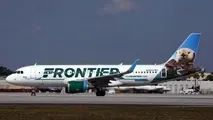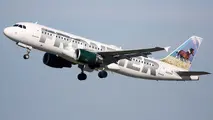Frontier Considers Growth, As Budget Rival Spirit Shrinks
Frontier Airlines is evaluating opportunities for growth in 2026 as it responds to competitive capacity reductions and expects to have a clearer forecast in the next several months.

Frontier Airlines is evaluating opportunities for growth in 2026 as it responds to competitive capacity reductions and expects to have a clearer forecast in the next several months.
“We’re watching what’s happening in terms of network deployment across the industry, including Spirit [Airlines] at the moment,” Frontier President Jimmy Dempsey said on a Nov. 5 earnings call. “You’ve seen us launch some stuff across the United States in the last couple of months that fill in for some capacity that we think is going to be adjusted in their network. Whether that drives material growth next year or not, we don’t know, we’ve got to see how things develop in the next two or three months.”
The carrier’s fleet is positioned to infill additional capacity that may come out of the marketplace, he said, leveraging either its orderbook or adjustments in utilization. Frontier ended the September quarter with a fleet of 166 Airbus aircraft and expects another 10 deliveries in the fourth quarter—seven A320neos and three A321neos. Nodding to the 6-8 month process it takes to hire, train and deploy pilots in its network, Dempsey suggested any meaningful growth would occur sometime in the second, third, or fourth quarter of 2026.
“What you’re likely to see as you progress through next year is growth more on peak days than off-peak days, through new aircraft deliveries,” Dempsey told investors. “Whether we choose to do higher utilization or not, that’s something that we have to consider going into next year to see where the competitive capacity environment is.”
Budget rival and one-time merger partner Spirit is pulling back in many markets amidst its latest restructuring process, while Frontier embarks on an aggressive expansion. Declining to comment or speculate on any future merger potential, CEO Barry Biffle instead described opportunity from ongoing domestic capacity reductions he expects will continue through 2026.
“I think you’re going to see a lot less seats,” Biffle said. “Consolidation is one of the mechanisms to help facilitate that, but it’s not the only way to get there ... There’s another carrier that is not a ULCC that we suspect is going to shrink a considerable amount over the next year. I think a seat is a seat and the more that go out, it’s probably constructive.”
Frontier ended the third quarter with total operating revenues of $886 million, down 5% year-over-year, on a 5% increase in operating expenses. It reported a net loss of $77 million for the quarter, compared to a year-ago net profit of $26 million. Investments in loyalty assets—including its mileage program and co-brand credit card—generated approximately $7.50 in revenue per passenger in the quarter, up by more than 40% year-over-year, “driven by enhancements that resonate with higher income, higher credit customers,” said Chief Commercial Officer Bobby Schroeter.
In the fourth quarter, Frontier expects capacity to be roughly flat year-over-year. It projects competitive seat capacity will decline by 2%, citing significant reductions by Spirit which it said is exiting 36 overlapping routes and reducing frequencies by 30% across 41 others in December.
“This dynamic should drive sequential improvement in stage adjusted RASM and supports our confidence as we plan for 2026,” said Dempsey. “We expect to return to growth next year, given the developing competitive landscape, and will provide formal 2026 capacity guidance on our next earnings update.”
Last fall, Frontier described a trajectory it hoped would return the business to double-digit margins by the midpoint of 2025. Though declining to provide updated projections for reaching that milestone, the carrier pointed to several of its initiatives in the premium and loyalty space as poised to contribute meaningfully to the bottom line. Frontier believes it is positioned to double its loyalty revenues per passenger over time, and projects a “material jump in RASM” from new first-class seating launching in the spring. The ULCC intends to push its costs down further and expects continued competitive capacity reductions to be a “huge tailwind” going into 2026.
“We didn’t plan on all of the things that happened and the turmoil in the front half of this year,” said Biffle. “I’m not going to declare the day we’re going to get back to any margin target, but I can tell you that there are plenty of fundamentals that are in our favor at this point.”

